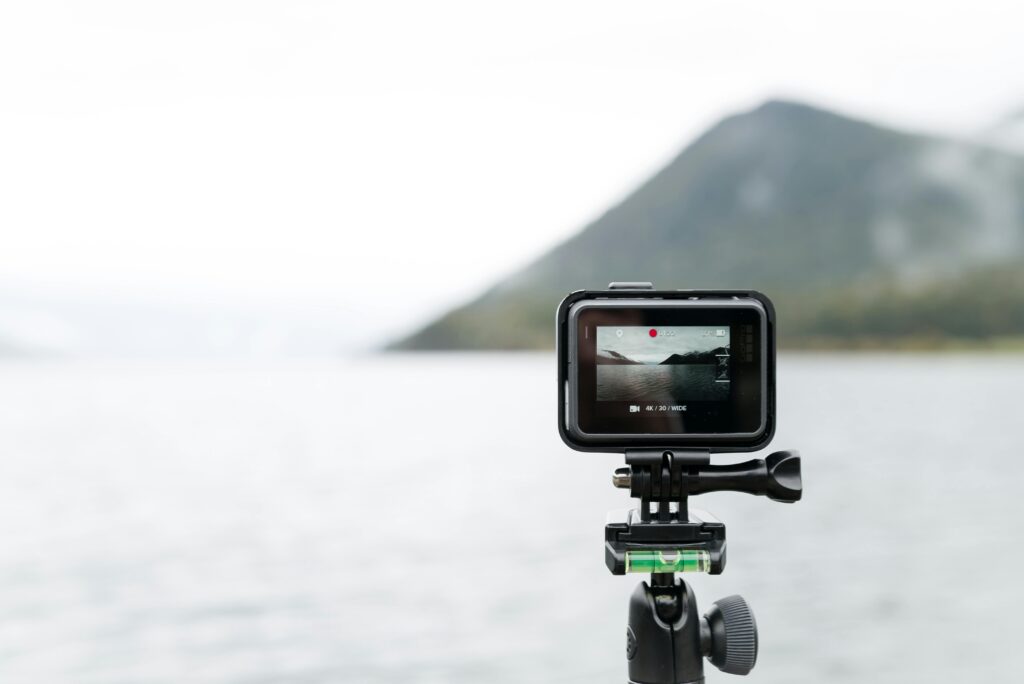Action cameras promise a front-row seat to motion. Reality delivers bumps, wind roar, fogged glass, and footage that argues with memory. The fix is not luck; the fix is a practical recipe for stabilization, clean audio, and mounts that frame truth instead of chaos.
Hunt settings like a treasure run in a diamond mining game: small, deliberate picks reveal clarity while greedy swings collapse the tunnel. A calm sequence of optics, motion control, sound, then geometry turns scrappy clips into watchable stories that survive the edit and the comment section.
Stabilization: From Jitter to Glide
Electronic stabilization has become the backbone of small cameras. Modern chips read gyro data, crop gently, and level horizons so city bricks and mountain switchbacks stop wobbling. The sensor still wants light. High frame rates fight blur but demand faster shutter and more photons. When sun refuses to help, neutral-density glass rescues motion cadence by allowing slower shutter without overexposure. Horizon lock can save a lap; full lock can also erase lean on bikes, so partial leveling often looks truer. Rolling shutter lurks in hard vibrations; a rigid mount with a rubber isolator helps more than any filter.
Stability Playbook — Fast Fixes That Stick
- Match frame rate to speed: 60 fps for fast action, 30 fps for narrative. Avoid “everything at 120” unless slow-mo is the point.
- Respect the 180-degree rule: Shutter near 1/(2×fps) for natural blur; add ND when daylight spikes.
- Use linear or de-fisheye lenses: Ultra-wide exaggerates wobble at edges; linear keeps lines honest.
- Cap stabilization strength: Medium often beats “max,” which can warp corners during jolts.
- Log gyro to fix in post: External stabilizers like Gyroflow love clean motion data for surgical edits.
- Tame vibration at the source: Solid mount, one gasket, no loose joints; shaky plastic ruins silicon heroics.
Clarity also depends on bitrate. A camera that writes aggressively high profile, modern codec keeps asphalt texture and foliage detail from dissolving into mush. Heat rises with bitrate, so airflow and short takes prevent thermal throttling that can sabotage frame pacing.
Sound: If It Can’t Be Heard, It Didn’t Happen
The smallest body carries the hardest audio job. On-camera ports hide tiny capsules that hate wind and love echoes. The path to legibility starts with placement and gain, not with magical EQ later. A short cabled mic under a helmet peak, a lav behind a chin bar, or a compact shotgun with a proper deadcat moves air noise off the track. Many cams now support USB-C audio; a reputable interface beats bargain dongles that add hiss. Safety tracks at a lower gain rescue shouts and tunnels, while low-cut filters clear rumble from boards, bars, and dashboards. Stereo is nice; phase-coherent mono is sometimes kinder when vehicles, crowds, and water confuse direction.
During setup, meters tell the truth. Peaks should flirt with yellow, not head-butt red. In post, gentle compression and a dB or two of makeup gain carry the story without pumping. If ambience matters, tires on gravel, chain over sprocket duck music rather than drowning the texture that proves speed.
Workflow: Settings That Travel Well
A robust base looks like this: 4K at 60 for action or 4K at 30 for scenes, high bitrate, flat or log color for grading headroom, and consistent white balance to avoid rainbow jumps mid-ride. Lens marks clean fingerprints; microfiber lives in the pocket. Cards labeled by day prevent overwrite disasters. For mixed rigs, clap once or flick a light for easy sync. Back home, denoise sparingly, stabilize only where needed, and resist the temptation to sharpen asphalt into sandpaper.
Mounts: The Geometry of Truth
A camera tells the story chosen by the mount. Low and forward exaggerates speed; high and central tells the full line. The safest angle is not always the most exciting, yet a falling camera ends any story. Tethers matter. Quick-release plates save time in rain and gloves. Magnet mounts tempt, but metal fatigue and grit make a backup strap a cheap insurance policy.
Mounting Angles That Actually Work
- Chin mount on a full-face: Natural POV with stable horizon; voice pickup improves inside the shell.
- Chest harness: Foreground hands and bars create speed cues; stabilization has an easier job near the core.
- Handlebar or stem: Crisp road texture and lean hints; add a rubber isolator to avoid high-frequency buzz.
- Tail or seatpost: Reverse drama for chasers; check clearance for suspension travel and clothing.
- Board or deck nose: Low parallax makes ground fly; use a leash and inspect adhesive in cold.
- Suction on glass or bodywork: Clean surface, warm cup, safety tether; re-seat after big temperature swings.
Legal and social basics keep footage usable. Sensitive areas dislike cameras; signage wins arguments. Shared trails and lineup queues deserve eye-level etiquette. A wave and a “recording on” beats an awkward cut later.
The Short Verdict
Stabilization earns trust only when the mount is honest and the shutter respects motion. Audio carries memory when placement beats wind. Mounts decide whether pace feels real or cartoonish. Treat the rig like a compact newsroom: facts first, flair second. With a sensible playbook and a tidy bag, a palm-sized camera stops begging for forgiveness and starts delivering clips that feel exactly like the day that made them.




